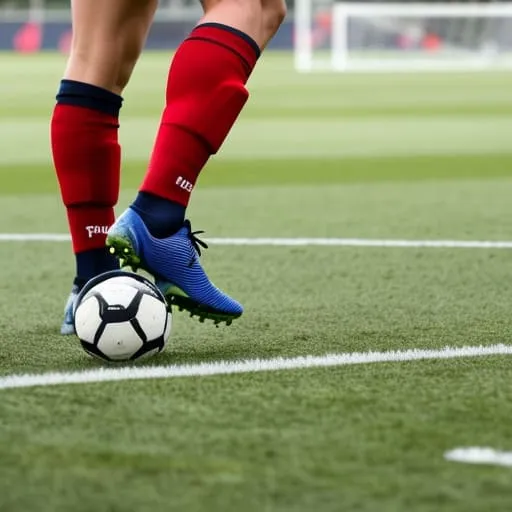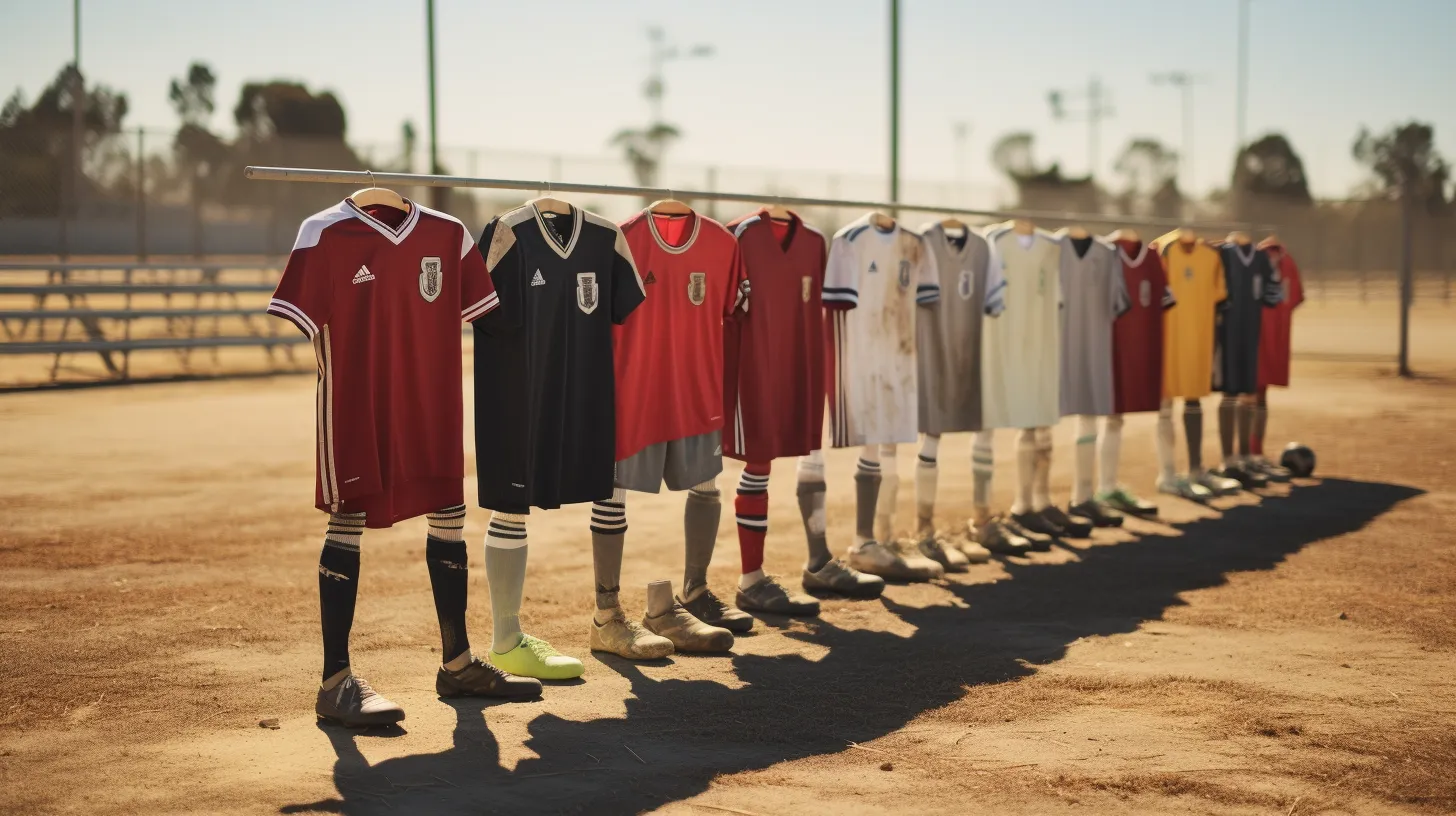In the world of soccer, one of the most pivotal protective gear is the shin guard. In this comprehensive guide, we will explore the importance, types and the proper way to wear soccer shin guards with socks.
Why do Soccer Players Wear Shin Guards?
The wearing of shin guards by soccer players is a crucial defensive tactic in the physical game of soccer to protect the lower leg or shin from injury.
Soccer shin guards serve to absorb and distribute the shock from a hard impact, protecting the lower leg from bruising and fracture.
The Importance of Shin Guards in Soccer
Shin guards play a vital role in every soccer player’s gear. They are specifically designed to protect the shin, which is a vulnerable part of the body and one most susceptible to severe injury.
Many soccer players have experienced an injury to the lower leg and understand the pain it can cause, making shin guards an absolute necessity for any serious player.
Understanding the Role of Shin Guards
Understanding the role of shin guards is vital. They help prevent injuries by absorbing the force of a kick or a strike to the lower leg, maintaining the player’s safety during the game.

It is so essential that players wear shin guards and socks that they are required for legal gameplay in most sports, including little soccer leagues.
The Consequences of Not Wearing Shin Guards
Not wearing shin guards can have serious consequences. Without them, a player can easily suffer from injuries that could put them out of play for months.
Furthermore, players neglecting to wear shin guards may be prohibited from playing as shin guards and socks are required for legal play per soccer guidelines.
Types of Soccer Shin Guards and How to Choose
There are various kinds of shin guards available, and choosing the right type of shin guard can significantly influence your protection and comfort while playing soccer.
The selection process should take into account the player’s position and level of play.
Different Styles and Types of Shin Guards
Shin guards come in different styles of shin protection, ranging from slip-in shin guards to shin guards with ankle guards.
Selecting between these depends on the player’s position, playing style, and personal comfort.
Best Shin Guards for Soccer Players
The ‘best’ shin guards may vary from player to player depending on their unique requirements.
Slip-in shin guards, for instance, offer more mobility and are preferred by more agile players, whereas shin guards with ankle guards are favored for their additional protection.
How to Select the Right Shin Guard
To choose the right shin guard, consider aspects such as fit, coverage, and material for optimal protection.
Guards should end at the top of the foot and bend comfortably with your shin, and leave a couple of inches below the knee to allow for optimal flexibility.
Do Shin Guards Go Over or Under Socks?
The question “Do shin pads go under socks?” has a clear answer: Shin guards go under the socks. This is the traditional way to wear soccer shin guards with socks.
The Traditions of Wearing Soccer Shin Guards
Traditionally, players put on shin guards and then pull their soccer socks over their guards, securing the shin guards in place during the game.
This time-honored tradition arose from the necessity of keeping the shin guards securely fastened around the shin.
Efficient Ways to Secure Shin Guards in Place
Above all else, shin guards should always be secure. Some players use tape or a compression sleeve to secure the shin guards in place.
For those wearing slip-in guards, it is often beneficial to wear compression sleeves or socks with a pocket for the guard to ensure they remain in place.
Shin Guards With Socks: Do or Don’t?
Definitively, the answer is ‘Do’. Wearing shin guards with socks ensures that the guards stay in place throughout the match.
Moreover, wearing guards under socks also satisfies the soccer rule that shin guards must be completely covered by the socks.
How to Secure Your Shin Pads and Guards with Ankle Guards?
Securing shin guards with ankle guards may seem more complex initially, but it can offer superior protection compared to standard shin guard styles.
They are the preferred choice for many defensive and novice players who are often in the line of direct kicks.
Pros and Cons of Shin Guards with Ankle Guards
Shin guards with ankle guards offer superior protection but may restrict movement somewhat compared to slip-ins.
However, for players in high-contact positions who require additional support and protection, these can prove to be an invaluable resource.
The Correct Way of Wearing Shin Guards with Ankle Guards
To properly wear shin guards with ankle guards, the player places the guard on their leg ensuring that the lower portion or stirrup is under the foot.
Then the player must pull their sock over the guard to keep the shin guard in place.
Securing Shin Guards Without Ankle Guards in Place
For slip-in shin guards or shin guards without ankle protection, players can secure them using a compression sleeve or shin socks.
These additional items ensure that the shin guards are kept firmly in place throughout the game.
Essential Tips on Wearing Your Soccer Shin Guards and Socks
Regardless of the type of shin guard you choose, understanding the best way to wear soccer shin guards will help maximize both comfort and protection.
Best Practices for Wearing Shin Guards
The guard should cover your shin adequately, from your ankle to below your knee. If it doesn’t, it’s likely not the correct size for you. The sock should also fully cover the shin guard, as per soccer rules.
Do’s and Don’ts: Shin Guards and Socks
Do ensure your shin guard fits well and stays in place. Do wear socks that fully cover your shin guards.
Don’t wear them loose because poorly fitting shin guards can shift during the game, reducing their effectiveness.
Maintaining Comfort and Protection with Shin Guards and Socks
Aside from protection, comfort is also a huge factor when using shin guards.
Having a good fit where the guards are not too tight but also not too loose to slip will ensure optimal protection, allowing maximum flexibility and movement during gameplay.
